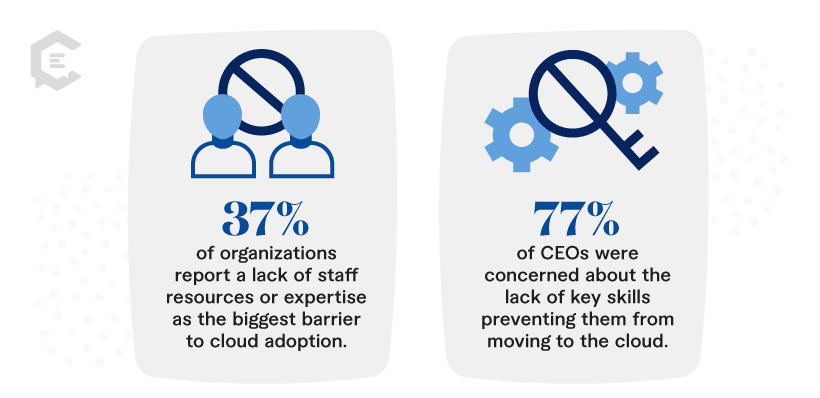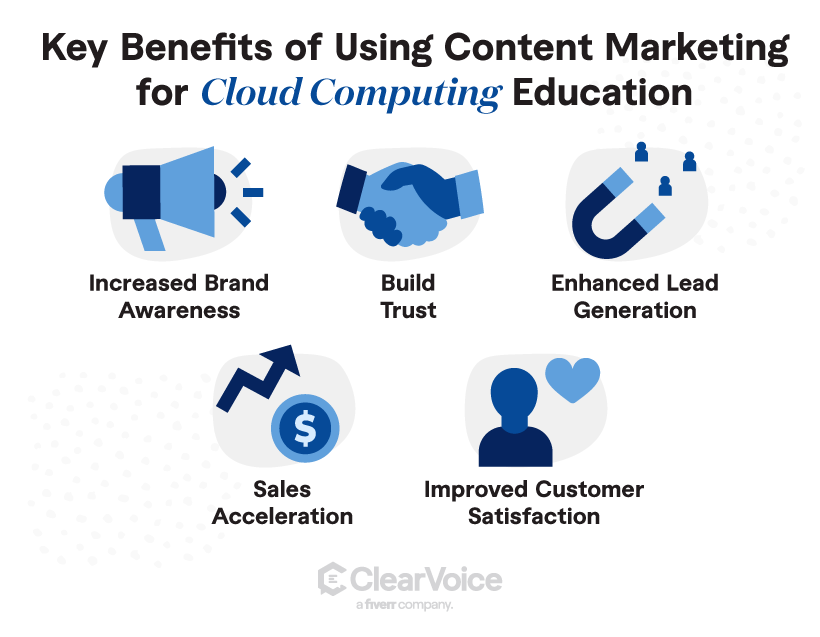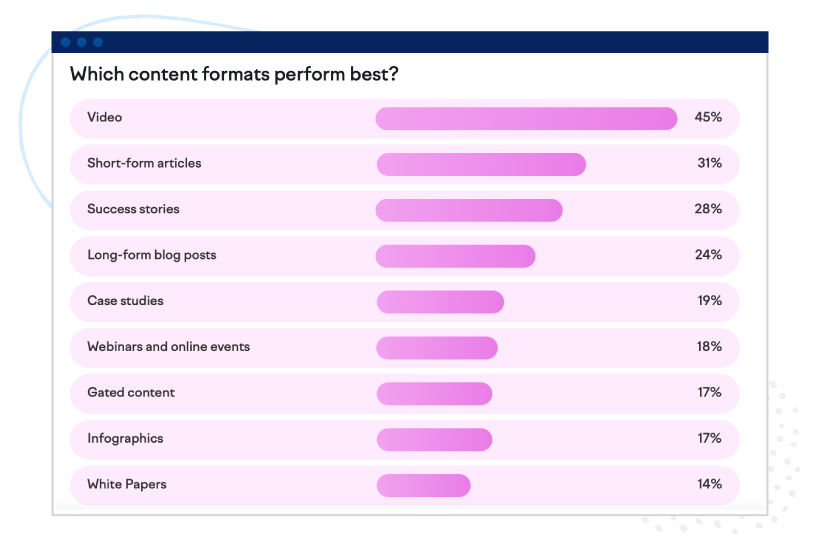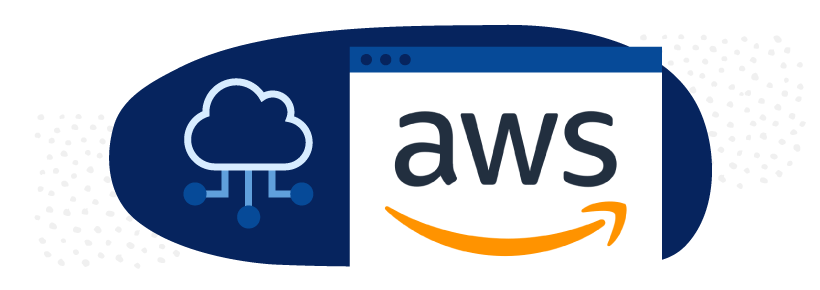No one likes a steep learning curve. And cloud computing has one. That’s why a lot of businesses are slow to adopt it into their process. Plus, a lot of them lack the in-house resources or expertise for cloud adoption.
But breaking through those barriers is one of the many benefits of content marketing in cloud computing. It highlights how cloud computing helps businesses reduce costs, increase flexibility, and enhance security. The core way in which it highlights that? Educational Tech and SaaS content.
In this article, we’ll tackle the role of content marketing in cloud computing education. We’ll cover its key benefits and the best strategies for effectively integrating educational content into your marketing plan.
The Role of Content Marketing in Cloud Computing Education
According to Statista, 37% of organizations report a lack of staff resources or expertise as the biggest barrier to cloud adoption. A PwC survey also found that 77% of CEOs were concerned about the lack of key skills preventing them from moving to the cloud. These numbers reveal the need for cloud computing education to address the knowledge and skills gap and drive increased cloud adoption.
Cloud computing content marketing serves as the perfect tool to deliver this necessary education. You can create different types of content to:
- Provide information about cloud computing: Give your audience a better understanding of how cloud computing works and how it can benefit their organization.
- Compare different cloud computing providers: Create comparison posts about different cloud computing providers, highlighting information such as their pricing, features, and customer support. This helps your audience make a more informed decision when choosing cloud-based solutions.
- Educate businesses about the latest cloud computing trends: Use white papers and case studies to educate businesses about the latest cloud computing trends in the tech and SaaS industries. This may include trends such as the rise of artificial intelligence (AI) and machine learning (ML) in cloud computing.
- Demonstrate the benefits of cloud computing: Publish blog posts, reports, and case studies demonstrating the benefits of cloud computing, such as cost savings, scalability, and security.
And if you’re not sure where to start with your content, we’ve got five Tech and SaaS content ideas that can drive your strategy right away.
Key Benefits of Using Content Marketing for Cloud Computing Education
Content is vital to educating audiences about cloud computing. But its value doesn’t stop there. Here are some other benefits:
- Increased brand awareness: Content marketing raises brand awareness by positioning your business as a thought leader in the cloud computing industry.
- Build trust: Content helps you demonstrate your expertise and establish yourself as a reliable source of information with prospects.
- Enhanced lead generation: You can turn potential customers into leads by asking for their contact information in exchange for educational content. Then, you can nurture those leads and convert them into customers using persona-based content marketing campaigns.
- Sales acceleration: The most successful Tech and SaaS content marketing provides prospects with the information they need to decide, giving them the confidence to make a purchase.
- Improved customer satisfaction: Educational content also supports customers to use your cloud computing solutions effectively. This makes it easy for them to get the help they need when they need it, enhancing their experience.
Strategies for Effectively Integrating Educational Content into Your Marketing Plan
If you’re wondering how to educate customers about cloud computing, here are a few strategies to help you incorporate educational content into your marketing plan.
Address common pain points and questions
The key to winning at cloud computing education is to share content relevant to your target audience. This means using content to address their common pain points and answer frequently asked questions.
Look at popular search terms to see what type of educational content people are looking for in the cloud computing industry. Then develop content that will address those needs.
Use a variety of content formats
While some may prefer to read, others may be better at processing information in an audio-visual format. So make sure you experiment with different content formats to appeal to a wider audience.
According to Semrush’s State of Content Marketing Report, video performs best, followed by short-form articles, success stories, and long-form blog posts. Don’t forget to test other formats like webinars, infographics, and research reports.
Image Source: Semrush
Promote your educational content
Creating educational content isn’t enough if your target audience isn’t seeing it. You need an effective promotion strategy to promote it through multiple channels and get it in front of the right people.
Track your results
After your content goes live, it’s important to track performance to see what’s working and what’s not.
Use Google Analytics and other content analytics tools to see which pieces of content get engagement and shares. This will help you identify the topics that resonate with your audience and the content formats they prefer. So you can keep refining your strategy to maximize your results.
If you want to take your strategy a step further, read our guide on how to avoid common pitfalls in cloud computing content marketing.
Case Studies: How Content Marketing Drives Engagement and Adoption of Cloud Solutions
Here are two case studies that demonstrate how content marketing can drive engagement and adoption of cloud solutions:
Case Study 1: IBM
IBM is a leading cloud service provider with a blog that caters to all types of people — from people just looking to get started to experts in cloud technologies. Through this blog, beginners get in-depth explanations of the fundamentals of the cloud, while experts get detailed tutorials on specific cloud computing projects. Meanwhile, business owners also have a dedicated section of blog posts that teach them about the value and uses of cloud in business.
By providing educational content that caters to audiences of all knowledge levels, IBM addresses common pain points for different types of prospects. As these prospects gain the knowledge and confidence to incorporate cloud solutions, IBM has been able to effectively drive cloud adoption.
Case Study 2: Amazon Web Services (AWS)
Amazon Web Services is a leading cloud computing platform. The platform uses content marketing to educate potential customers about the industry and regularly shares valuable educational content.
They have a dedicated tab where people can get hands-on tutorials on how to get started with AWS, learn from AWS experts, and discover customer stories. They also share educational content about industry best practices and thought leadership pieces on executive insights. Today, AWS ranks #1 globally in the web hosting and domain names category.
Conclusion: Embrace Education as a Key Component of Your Content Marketing Strategy
With cloud computing, content is the gateway to reducing the learning curve and attracting potential customers. Incorporating content that demystifies the cloud computing technology and processes into your marketing strategy can accelerate growth and drive lead generation.
With that said, you need to have the right people in place to ensure that content is exceptional and engaging. Because without the right subject matter expertise, your content won’t hit the mark.
If you’re looking for top-tier tech writers, you’re in the right place. At ClearVoice, our Talent Network includes a wide range of vetted, proven writers who have experience producing high-quality tech content that drives success.
Talk to one of our content specialists today to see how we can match you with the best writers that fit your needs and budget.








